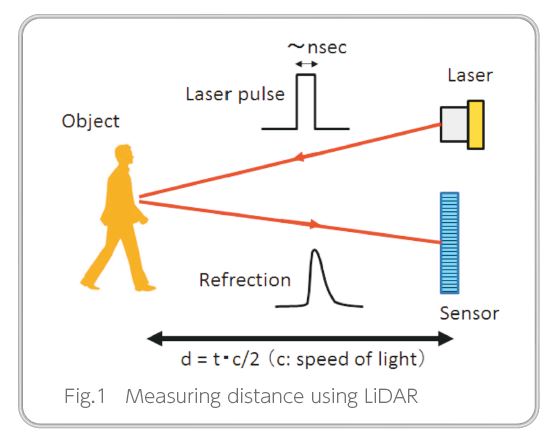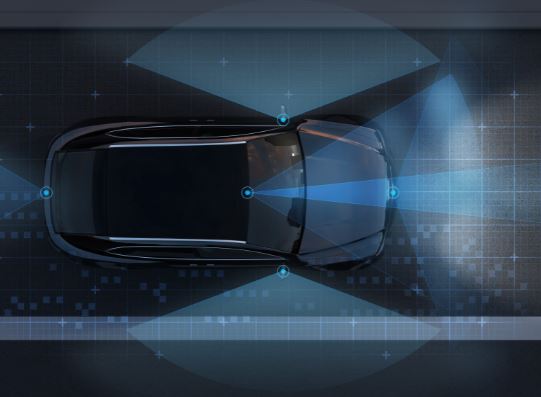This post is also available in: Japanese
In recent years, advances in autonomous driving technologies, as well as a surge in adoption of electric vehicles, have been stimulating market demand in the automotive industry. Especially for autonomous driving, its success is highly dependent on its capability to consistently retrieve and process the 3D information of what is around the vehicle.
This continuous information retrieval can be achieved by utilizing LiDAR technology, which enables 3D sensing of high accuracy. In fact, the LiDAR market for automotive applications is expected to increase from 1.5 billion yen in 2018 to 140 billion yen by 20241).
LiDAR works by sending pulsed laser in the form of light to an object in order to gauge the distance between the sensor and the object (Figure 1). By measuring the time, also known as Time of Flight (ToF), taken for the reflected light to be detected via the LiDAR, the distance can be derived.

There are typically two types of LiDAR, as follows:
(a) Scanning LiDAR
This type uses continuously pulsed laser emissions and a mechanical scanning
(b) Flash LiDAR
This type uses a high-output single pulse laser and a 2D photo detector array
Unlike most other commercial methods, which use cameras or millimeter-wave radar, LiDAR uses infrared laser. Refer to Table 1 for a list of the features of these sensors. Since LiDAR uses infrared light, which has shorter wavelength compared to millimeter-wave radar, it is able to detect its surroundings at higher spatial resolutions, making it better able to detect objects such as pedestrians and bicycles. Even though performance of LiDAR drops under unfavorable weather conditions such as fog or rain, nighttime detection performance is still comparable to other commercial methods.

However, LiDAR must be kept as compact as possible so as not to compromise car design. At the same time, it must be affordable compared with other commercial methods. These requirements can be achieved by using compact infrared semiconductor laser diodes (LDs) as the light source for LiDAR. The market for 3D sensing LDs is expected to grow from 18 billion yen in 2018 to 70 billion yen by 2024 as adoption of LiDAR increases2).
This paper introduces the features of semiconductor LDs that are used in LiDAR systems. It also describes the dry process technologies used to address the challenges faced in manufacturing semiconductor LDs.
*This article appeared in the September 2019 issue of the technical journal No. 83.
You can download full article with your registration
https://www.ulvac.co.jp/r_d/technical_journal/tj83j/
References
1) P.Boulay, A.Debray, LiDAR for Automotive and Industrial Applications 2019 Report, (Yole Development, 2019)
2) M.Vallo, P.Mukish, Edge Emitting Lasers: Market & Technology Trends report(Yole Development, 2019)

